-
U.K. government rejected flood warnings from own advisers
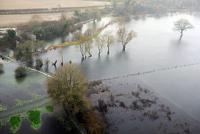
Critics charge that the U.K. government was warned by both the government’s own climate change experts and outside consultants that there was a need to take urgent action to protect the increasing number areas in Britain which are becoming susceptible to flooding, but that the government rejected the advice. Despite the urging of its own climate experts, the U.K. government in October, just a few weeks before the devastating flooding in Cumbria, decided not to develop comprehensive strategy to address flood risk.
-
-
Climate change losses for Southeast Asia well above previous estimate: ADB
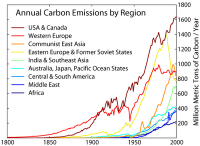
Economic losses from the impacts of climate change in Southeast Asia could be 60 percent higher than previously estimated, reducing the region’s gross domestic product (GDP) by up to 11 percent by 2100, according to a new Asian Development Bank (ADB) study. The analysis is an update to a 2009 ADB report that estimated a 7 percent annual reduction in economic output due to climate change.
-
-
Pairing seismic data, radionuclide fluid-flow models to detect underground nuclear tests
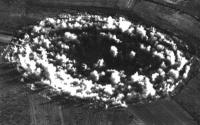
Underground nuclear weapon testing produces radionuclide gases that may seep to the surface, which is affected by many factors. These include fractures in the rock caused by the explosion’s shock waves that create pathways for the gas to escape plus the effect of changes in atmospheric pressure that affect the gases’ movement. Scientists have developed a new, more thorough method for detecting underground nuclear explosions (UNEs) by coupling two fundamental elements — seismic models with gas-flow models — to create a more complete picture of how an explosion’s evidence (radionuclide gases) seep to the surface.
-
-
Locust-inspired robot traverses rocky terrain, assists in search and rescue

Since the 1980s, advanced robotic platforms have provided assistance to crisis intervention teams in the wake of man-made and natural disasters. The objective of such robots, in various sizes and shapes, has been to intervene where humans cannot and send life-saving data to rescue teams in the field. A new, locust-inspired robot, can jump eleven feet high — more than twice the height of similar-sized robots — and cover a horizontal distance of 4.5 feet in one leap. The researchers believe the robot will perform well in search-and-rescue missions and in reconnaissance operations in rough terrain.
-
-
The believers: String theory explains Santa Claus
Some argue that the laws of physics should prevent Santa Claus from delivering all his gifts and that Santa would burn up in the atmosphere if he tried. The Norwegian Internet magazine, forskning.no, has put together a team of four top researchers to look into the case, and the panel’s conclusion is clear: Santa can do the job and Christmas is saved.
-
-
The skeptics: Laws of traditional physics would foil Santa's effort to carry out mission

Santa has 31 hours to visit 378 million Christian children; at the rate of 3.5 children per household. Assuming at least one good child per home, this comes to 108 million homes. If each child receives no more than a medium sized Lego set (two pounds), the sleigh would be carrying more than 500 thousand tons of cargo, not counting Santa himself. Santa would thus need at least 360,000 Reindeer to pull the sleigh. Since Santa must visit 108 million homes in 31 hours, he will have to travel at 650 miles per second — 3,000 times the speed of sound, but at that speed, the lead pair of Reindeer would absorb 14.3 quintillion joules of energy per second each and vaporize — indeed, the entire Reindeer team would be vaporized within 4.26 thousandths of a second. Santa himself would be subjected to forces of 17,500 Gs. A 250 pound Santa (which seems ludicrously slim) would be pinned to the back of the sleigh by 4,315,015 pounds of force, and be crushed.
-
-
U.S., Israel to co-develop technologies for first responders

Some $12 million will be funneled to collaborative Israeli-American projects for the development of advanced technologies for first responders over the next three years. The agreement brings together the Israeli Ministry of Public Security and the U.S. Department of Homeland Security in a drive to better equip and prepare both countries’ national rescue forces including fire, police, and first-aid units. Each side will invest equally in the project.
-
-
Making the power grid more resilient, flexible
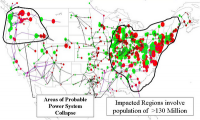
“The biggest and most complex machine ever built by humankind” – this is how one researcher describes the U.S. power grid. A research team has been charged with the formidable task of transforming that big and complex machine from the inside out. Inverters convert DC (direct current) electricity to AC (alternating current) electricity, the kind that forms the basis of today’s power grid. To integrate more inverter-based distributed generation into the grid, the researchers are developing a dynamic distribution system (DDS) that supplements centralized power plants, instead of replacing them.
-
-
Idaho to become U.S. geothermal research hot spot
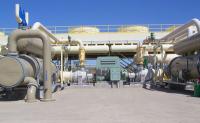
For all the talk about energy shortages, the fact is the Earth is giant ball of energy that has been producing heat ever since the solar system was formed billions of years ago. The temperature at the core — 6,000 degrees Celsius — is roughly the same as the surface of the sun. All that heat radiates outward through the Earth’s mantle and crust. Less than 1 percent of the electricity in the United States comes from geothermal sources, and energy specialists believe that geothermal power should make a much greater contribution to U.S. electricity. A new consortium plans to pump water into the rock about 8,000 to 12,000 feet deep, fracture the rock and capture heat, then bring heated, pressurized water back to the surface to generate energy.
-
-
Terrorism pushes liberals to think more like conservatives

Liberals’ attitudes in the United Kingdom toward Muslims and immigrants became more like those of conservatives following the 7 July 2005 bombings in London, new research shows. Data from two nationally representative surveys of British citizens revealed that feelings of national loyalty increased and endorsement of equality decreased among political liberals following the terrorist attack. “Our findings show that terrorism shifts public attitudes towards greater loyalty to the in-group, less concern with fairness, and greater prejudice against Muslims and immigrants, but it seems that this effect is stronger on those who are politically left-leaning than those who are right-leaning,” explained one of the researchers.
-
-
No rise in anti-Muslim sentiment in U.K. in wake of Paris attacks: Poll

Last month’s terrorist attacks in Paris appear not to have led to a rise in anti-Muslim sentiment in Britain, a new study has shown. The new research comes amid concerns that Western public opinion may grow more hostile toward Muslims, as evidenced by the success of the Front National in the first t round of France’s regional elections three weeks ago, and the apparent popularity of Republican presidential candidate Donald Trump, who has called for a ban on Muslim immigration to the United States.
-
-
U.S. reliance on nonfuel mineral imports increasing
Key nonfuel mineral commodities that support the U.S. economy and national security are increasingly being sourced from outside the U.S., according to a new U.S. Geological Survey report. Over the past sixty years, there has been an increase in the number and diversity of nonfuel commodities that the United States imports as well as the extent to which the United States is import reliant.
-
-
Recovering rare earth elements from coal mining waste
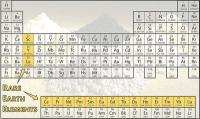
West Virginia could become one of the country’s significant sources for rare earth elements (REE), the “vitamins of modern industry,” without the expense or environmental cost of opening new mines. A new project brings together academia, state regulators, and industry to collaborate on finding a successful recovery technology for total REEs from acid mine drainage, or AMD. In Pennsylvania and West Virginia alone, it is estimated that AMD generates more than 45,000 tons of total REEs per year or about three times the current U.S. demand for total REEs.
-
-
The mind of a cyberterrorist, a neglected aspect of cybersecurity
A new study is delving into an aspect of cybersecurity rarely explored before now: the human component. The reason why this topic is lesser known, a leading expert says, is that security professionals become very focused on the technological side of responding to attacks and lack the social psychology background to analyze and understand the human being on the other side of that attack.
-
-
U.S. facing looming grain failures

Across the United States, record quantities of corn and soybeans have been harvested in recent years. However, according to new research, this trend may soon change. “By midcentury,” the interdisciplinary team reports, “temperatures in Illinois will likely be closer to those of today’s mid-South, and precipitation will range somewhere between that of today’s East Texas and that of the Carolinas.” In the face of a rapidly changing climate, the researchers call for a U.S. Midwest field research network to address crucial agricultural challenges.
-
More headlines
The long view
New Technology is Keeping the Skies Safe
DHS S&T Baggage, Cargo, and People Screening (BCP) Program develops state-of-the-art screening solutions to help secure airspace, communities, and borders
Factories First: Winning the Drone War Before It Starts
Wars are won by factories before they are won on the battlefield,Martin C. Feldmann writes, noting that the United States lacks the manufacturing depth for the coming drone age. Rectifying this situation “will take far more than procurement tweaks,” Feldmann writes. “It demands a national-level, wartime-scale industrial mobilization.”
How Artificial General Intelligence Could Affect the Rise and Fall of Nations
Visions for potential AGI futures: A new report from RAND aims to stimulate thinking among policymakers about possible impacts of the development of artificial general intelligence (AGI) on geopolitics and the world order.
Smaller Nuclear Reactors Spark Renewed Interest in a Once-Shunned Energy Source
In the past two years, half the states have taken action to promote nuclear power, from creating nuclear task forces to integrating nuclear into long-term energy plans.
Keeping the Lights on with Nuclear Waste: Radiochemistry Transforms Nuclear Waste into Strategic Materials
How UNLV radiochemistry is pioneering the future of energy in the Southwest by salvaging strategic materials from nuclear dumps –and making it safe.
Model Predicts Long-Term Effects of Nuclear Waste on Underground Disposal Systems
The simulations matched results from an underground lab experiment in Switzerland, suggesting modeling could be used to validate the safety of nuclear disposal sites.
